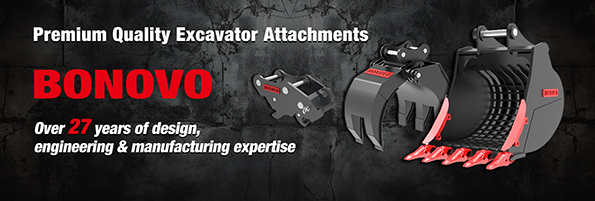1. Slight speed loss of excavator engine (within 200 RPM);
2, excavator engine speed loss is serious (more than 300 RPM, serious may lead to excavator car failure).
What is the speed loss of excavator ? What is the reason?
Explanation 1:
Some cars are controlled by a solenoid valve (fuel cutout) to cut off oil, so as to achieve the purpose of flameout, modern, Daewoo, Cummins engine are all.
Once encountered a similar problem, the solenoid valve gap is too large, just like the flame out drawing half of the effect, with the load resulting in insufficient oil supply, so the speed, speed resulting in insufficient oil supply to the diesel pump, this is a vicious cycle, and eventually lead to flame out.
Explanation two:
The impact of temperature is relatively small, after all, there is a cooling device, the impact of the environment is mainly air pressure, for high altitude areas, thin air, low oxygen content, insufficient engine combustion, affecting the engine performance, but the air supercharger also reduces the impact of high altitude.
The main reason affecting the engine speed loss or load change, when the hydraulic system failure can not change the displacement, which is easy to lead to speed loss or hold the car.
Explanation Three:
There are two main reasons for the loss of speed, the engine performance is reduced, the main pump has a problem, check the engine and the main pump.
You can first remove the hydraulic filter element to see that there is a lot of copper powder on the filter element is the main pump has a problem to overhaul the main pump.
You can also enter the monitoring panel to check the engine speed, the minimum throttle idle is more than 1000 RPM, the maximum throttle idle is more than 1300 RPM, and the maximum throttle is more than 1900 RPM when working.
If there is no copper powder and the engine speed is normal, the two solenoid valves on the main pump can be removed and cleaned to basically eliminate the problem.
Explanation four:
If the engine output power is much lower than the rated power, if it is judged on the construction site, the simplest method should be started.
First of all, look at whether the fuel filter is blocked, whether there is a leak in the fuel road, whether the plunger in the fuel pump, the fuel injection head, the oil outlet valve is seriously worn, whether the air filter inlet is smooth, the engine with a turbocharger, whether the turbocharger is damaged, whether the engine is fast and high temperature, the oil viscosity decreases, resulting in the cylinder wall sealing is not strict compression ratio decline, Whether the cylinder liner assembly wear causes serious gas in the cylinder, the engine valve closure is not strict, these are serious factors that affect the engine power.
If you exclude the insufficient output power of the engine itself, it is necessary to consider the matching problem of the flow of the hydraulic pump and the output power of the engine.
The engine will produce carbon deposits during use, so what are the production and harm of these carbon deposits?
The production of carbon deposits, the fuel is not pure
In fact, it is impossible to achieve 100% purity, and the filter will also have a filtration limit, so some small impurities in the fuel are carbonized and deposited in the cylinder after combustion.
The intake air is not pure
Two filter elements (coarse filter, fine filter) can not guarantee 100% of the filter out of the air. These fine dust enters the combustion chamber with the gas, and is deposited in the cylinder after combustion and carbonization.
Wear of moving parts
The moving parts in the cylinder, cylinder liner, valve, piston, piston ring, etc., will produce wear debris during high-speed movement, and these debris will be deposited in the cylinder after melting.
The dangers of carbon accumulation
Speaking of the harm of carbon deposits, the first thing to know is where carbon deposits are deposited. Carbon deposits after combustion, after explosion impact, will eventually be deposited into the piston ring groove, injector nozzle, valve.
Deposited in piston ring groove
Burned carbonized deposits accumulate in the piston ring groove, will accumulate more and more, stick to the piston ring, and eventually deform the piston ring, protrude, scratch the cylinder liner, causing the cylinder to pull and bite the cylinder. Cause cylinder liner piston ring all scrapped.
Deposited in the injector nozzle
The end result is to block the fuel injection port, and the current technology is basically unable to repair the fuel injection port of the electric injector, and the injector can only be replaced.
Deposited at the spiracle
Too much accumulation will cause uneven valve force, valve rod fracture, valve chassis fracture. As a result, the valve, the lock plate, the seat ring, the piston, all are damaged.
It can be understood from the above that carbon deposition in the engine can cause very serious consequences, so it is necessary to carefully understand the situation of the machine, especially the machine with a long year and many hours. Pay attention to whether the momentum is stable, whether it is declining. Once there is a problem, it should be repaired and replaced in time.
Engine overheating, in general, is the body of the cooling water temperature is too high. There are two common reasons for the overheating of the excavator engine, namely, the decline of heat dissipation capacity and the excessive heat load. The reasons for the decline of heat dissipation capacity are:
Poor heat dissipation
① The influence of the radiator After the radiator is used for too long, the scale inside it is also thickened accordingly. Due to the poor heat transfer capacity of scale, it will not dissipate heat.
② The radiator vent hole is blocked when the engine is working due to the role of the fan, the dust will flow through the radiator with the air. When the dust adheres to the radiator flat tube and heat sink, it not only reduces the air flow section of the radiator, but also causes the thermal conductivity to be too poor due to dust and dirt.
(3) The cooling intensity of the fan belt slip water cooling system depends on the fan speed, if the fan drive belt is too loose and slip, it will cause the power transfer efficiency to decline, which not only reduces the fan speed, cooling intensity, but also decreases the pump speed, the displacement is reduced, so that the cooling water flow speed is slow, can not quickly take away the heat, that is, poor heat dissipation.
The louvers and thermostat are cooling intensity adjustment devices, and if the cooling intensity adjustment device fails or is improperly operated, the engine temperature will be too high. The shutter is located in front of the radiator, which is used to adjust the ventilation flow of the radiator, and the ventilation volume is large when the opening is large, and the ventilation volume is small when the opening is small. When the shutters are not closed, the circulation section of the cooled air is smaller, and the result is an increase in engine temperature.
⑤ Thermostat damage thermostat is located in the water outlet of the engine, its role is to adjust the cooling intensity, that is, when the engine temperature is low, cut off the large circulation water to connect the small circulation water, in order to reduce heat dissipation to make the engine temperature rise quickly; When the engine temperature rises to the specified temperature, the thermostat will turn on the large cycle water channel and close the small cycle water channel. If the thermostat is damaged, the large circulation water can not be connected, resulting in poor cooling water circulation, resulting in the heat absorbed by the cooling water can not be sent to the radiator and the engine overheating.
When working in winter, the cooling water temperature of the radiator water chamber is very low and easy to freeze, when frozen, the cooling water does not circulate, causing the cooling water temperature to be too high.
Insufficient cooling water
Cooling water is the carrier of the heat in the cooling circulation system, that is to say, the heat that is taken away by the carrier of the engine body is taken away by the water, if the coolant of the cooling system is reduced due to leakage or evaporation, the heat in the body will be reduced naturally, so that the heat stored in the engine is too much, that is, the engine is overheating. The main reasons for the reduction of cooling water are as follows:
① Leakage cooling system water leakage is more common in water pump seal damage, pipe rupture or joint connection is not tight, radiator damage and water leakage, water release switch damage or close loosely, radiator equipment leakage, etc., will cause the cooling water of the cooling system to reduce, so as to cause engine overheating.
(2) The evaporation of the water in the evaporative cooling system is affected by temperature, and the cooling water in the system will also be reduced, if the recharge work is not timely, the result is the same as above.
Choose DIG-DOG for high-quality, customizable brush cutters for skid steers with fast delivery. Contact us today to discover how our superior products can enhance your land management tasks!
for more info just visit our website at www.dig-dog.com
contact # : +86 158 6218 2088
email : sales@bonovogroup.com
Excavator engine speed loss, carbon accumulation, heat do not worry! Treatment method
- DIG-DOG
- Counselor
- Posts: 655
- Joined: Oct 20th, '24, 22:38
- Location: China

